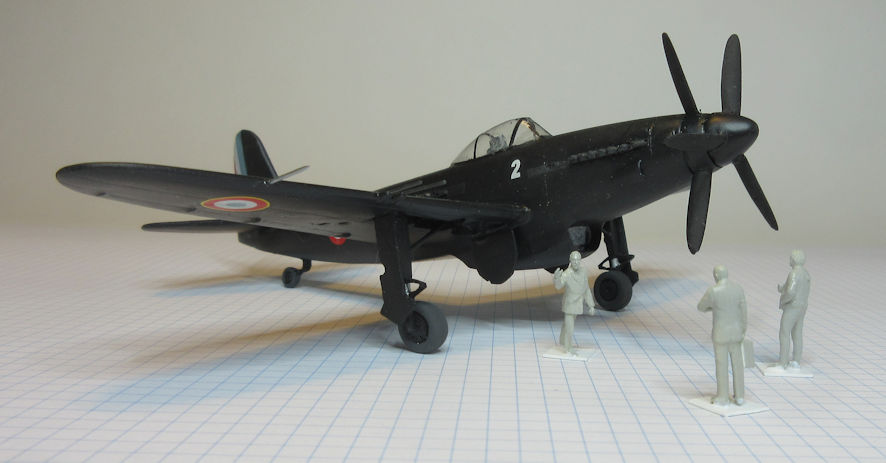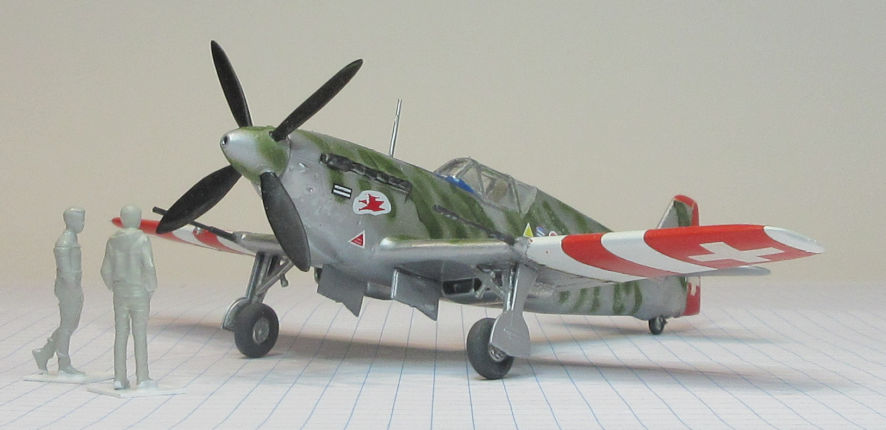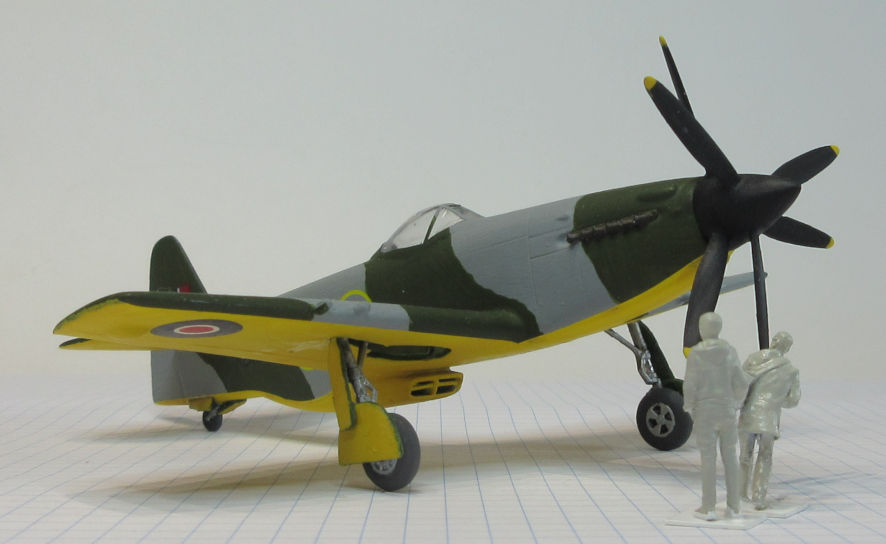Final piston engined fighters
Arsenal VB 10 – Doflug D.3802 – Martin Baker MB5
One of the things that you can’t help but notice as you wander through the gallery of 1940s aircraft is the number of exotic looking piston and jet engined aircraft. This is because it was the decade when many thought the piston engine had been developed about to its limit and the new jet engine was just beginning to show its potential. The result was a number of high performance piston engined aircraft that were never developed to their full potential because the first generation of jet powered fighters promides to be even better.
Let’s, then, have a look at three of these ‘last generation’ piston engined fighters. There are others in the gallery of the 1940s that I could have shown you, but these three come from three different countries where the same transition from pistons to jets was taking place, but under different circumstances.
Arsenal VB 10 in 1/72 by Dujin
This hulking big aircraft had its origins in a pre-war French request for a heavy interceptor which had evolved into the VB 10 that was designed and ordered in 1940. It did not, however fly until a couple of months after Germany’s defeat in 1945, by which time it was clear that future fighters would be jet powered. Two hundred were ordered as a stopgap and backup incase planned French jets fighters failed but, as it turned out, France took delivery of British and American jet fighters instead so only six VB 10s were built.
This model was made from a Dujin 1/72 resin kit, which is not bad but not one of the master’s finest kits, if you ask me. It was fairly easy to make, for a resin kit. Since then this kit has been released by FSC Dujin which has additional etch parts. More recently Akatombo have released another kit, also in resin, but there’s not much news about it on the interweb. Dujin said that the aircraft was painted black and Akatombo says it was dark green. Another photo, of the first prototype, shows it in what appears to be light grey. Who knows, since there were six of them they might have appeared in all three colours.
Doflug D-3802 in 1/72 by RS Model
Development of this little fighter began in 1940 when a license built version of the French Morane Salunier 406 fighter was made in Switzerland (the EKW D-3800). After that the Swiss developed a new aircraft, the Doflug D.3801 which was based on the Morane Saulnier 450 which was a French development of the Morane Saulnier 406. This was developed further as the D.3082 which was capable of flying at almost 400 miles an hour, but by then thoughts were turning to jet fighters so only 12 were build for the Swiss air force.
This model was made from the RS Models kit and is a reasonable kit, for a short run kit. If you’ve made any RS Models kit you will know what the expect, along the lines of pretty good detail, parts that fit, but not with Tamiya like precision, and a generally good decal sheet which gives several options. So far as Scalemates is aware, the only other option if a Dujin kit and, as much as I like the products of the Dujin workshop, the RS Models kit is perferable, and probably a lot more available.
Martin Baker MB5 in 1/72 by Azmodel
This fighter was a development of the earlier Martin Baker MB3 prototype which crashed, killing the pilot and partner of the company, Val Baker. This led the remaining partner, James Martin to become interested in aircrew safety equipment, leading to Martin Baker ejector seats.
The MB5 had the wings of the MB3 but a new fuselage with a powerful Rolls Royce Griffon. The prototype made its first flight in May 1944. It had superb performance and handling and some who flew it could not understand why it wasn’t put into production. However, by then the Royal Air Force was focused on developing its first generation of jet fighters so only the prototype was made.
I really did not enjoy making this Azmodel kit of the MB5. Nothing seemed quite right with it and I recall having a lot of trouble getting the canopy to fit properly. It was one of those ‘didn’t they make it first to see if the parts fit’ kit. Scalemates tells us that there have been a few other kits of this aircraft made and, to be frank about it, if I had a copy of the CMR resin kit I think it would make a better model. It would certainly be a better building experience if my enjoyment in making their CAC CA-15 is anything to go by.


